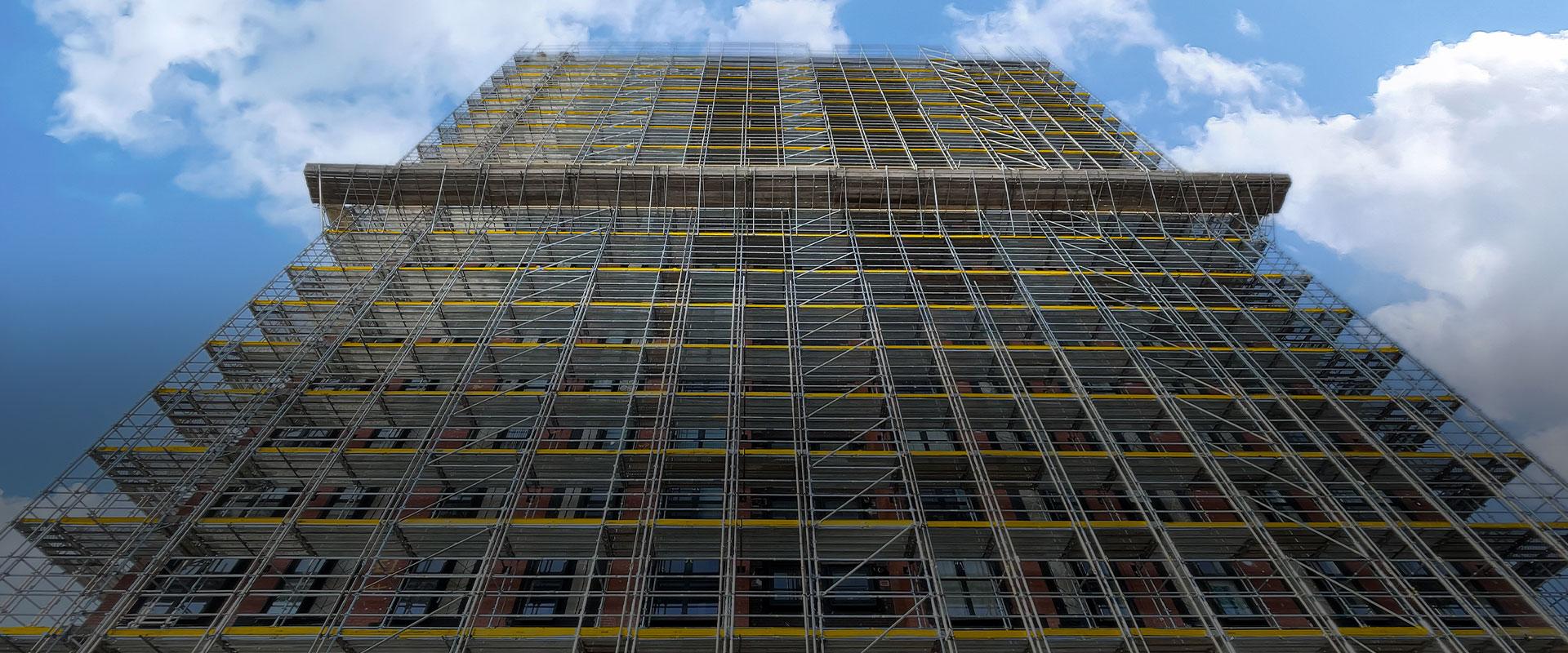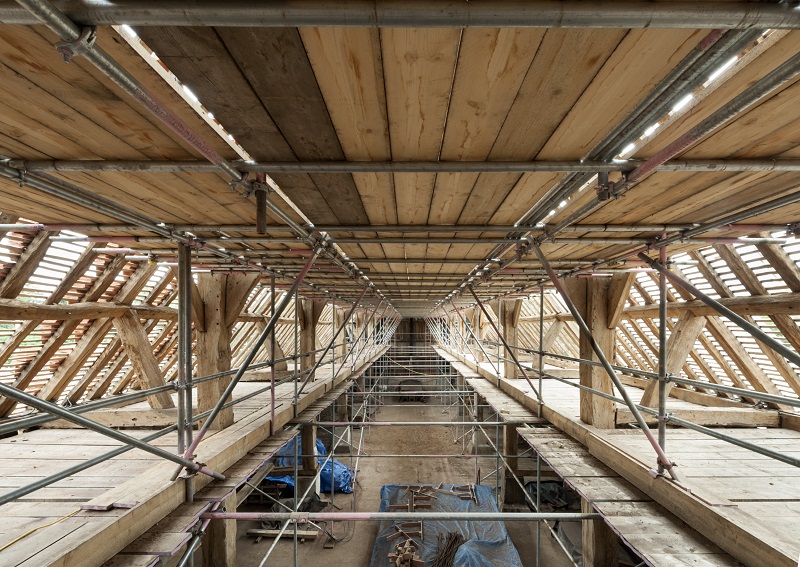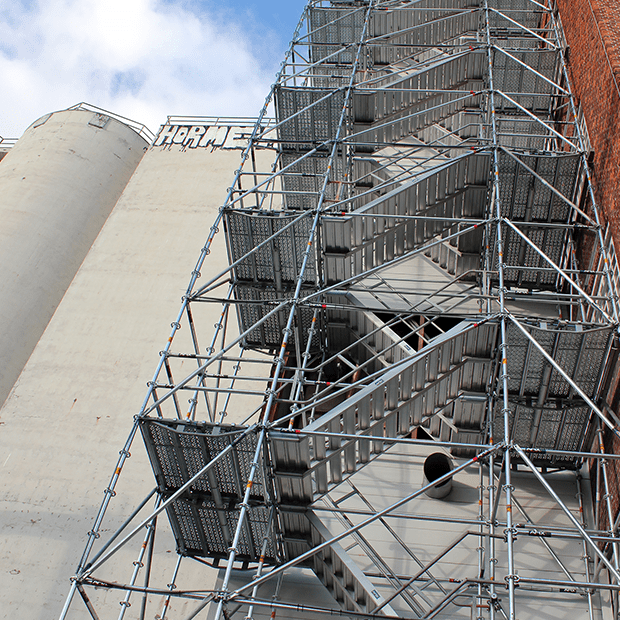Residential Scaffolding Solutions for Safe and Efficient Home Improvements
Residential Scaffolding Solutions for Safe and Efficient Home Improvements
Blog Article
Discovering the Various Kinds Of Scaffolding Used in Building Jobs
The construction market counts heavily on different types of scaffolding to fulfill specific task demands, each offering distinctive advantages and applications. Typical frame scaffolding gives a sturdy foundation for general tasks, while put on hold scaffolding is necessary for work on skyscraper structures.

Traditional Framework Scaffolding
Typical frame scaffolding is among the most extensively used approaches in the building market as a result of its toughness and versatility. This system contains straight and upright structures that are set up to produce a steady platform for workers and materials. The major parts consist of upright messages, horizontal ledgers, and diagonal braces, which together offer a solid structure that can support significant tons.
One of the crucial advantages of conventional structure scaffolding is its flexibility to numerous construction tasks, ranging from domestic structures to huge industrial frameworks. The modular layout enables simple setting up and disassembly, making it reliable for both lasting and short-term projects. Additionally, the system can be customized in height and width, suiting different structure designs and website conditions.
Security is vital in scaffolding applications, and conventional structure systems are equipped with guardrails and toe boards to stop falls and make sure employee protection. Regular assessments and adherence to safety guidelines are crucial in preserving the stability of the scaffold (Scaffolding). In general, typical frame scaffolding remains an essential option in the building and construction market, offering a reliable platform for labor and improving general task performance

Suspended Scaffolding
Put on hold scaffolding uses a special option for building projects that call for accessibility to raised surfaces, specifically in circumstances where standard framework scaffolding might be impractical. This sort of scaffolding is generally suspended from the roof or upper levels of a framework, utilizing a system of wheels, ropes, and platforms to produce a working area that can be readjusted to numerous elevations.
Among the main advantages of put on hold scaffolding is its flexibility. It can be quickly rearranged or lowered to suit changes in building needs, making it excellent for tasks such as home window installment, façade job, and maintenance on skyscrapers. In addition, the minimal impact of put on hold scaffolding permits much better usage of ground room in city environments, where area is usually restricted.
Security is a vital factor to consider in making use of suspended scaffolding. Proper rigging and anchoring systems need to be employed to guarantee stability and stop crashes. Operators must likewise be learnt the safe use this equipment. In general, put on hold scaffolding provides a reliable and reliable solution for accessing hard-to-reach areas in numerous building and construction situations, improving both efficiency and security on site.
System Scaffolding
System scaffolding, commonly considered as a contemporary solution in the scaffolding sector, is composed of pre-engineered elements that can be quickly constructed and adjusted for various building and construction jobs. Scaffolding. This sort of scaffolding is characterized by its modular design, which permits for convenience and performance on job sites, suiting architectural needs and different elevations
Generally made from high-strength steel or light weight aluminum, system scaffolding uses boosted durability and security. The elements consist of upright articles, straight journals, and diagonal braces, which interconnect securely, ensuring a durable framework. The design frequently includes standardized installations, streamlining assembly and disassembly processes, therefore minimizing labor time and expenses.

Rolling Scaffolding
Rolling scaffolding is a functional option to conventional fixed scaffolding, developed for movement and simplicity of use on building and construction sites. This kind of scaffolding includes a platform sustained by frames with wheels, allowing employees to quickly relocate it as required. The flexibility feature dramatically boosts efficiency, as it reduces downtime connected with putting together and taking apart dealt with scaffolding.
Typically created from light-weight products such as light weight aluminum or steel, rolling scaffolding offers a sturdy yet portable option for jobs calling for constant repositioning - Scaffolding. It is specifically beneficial in jobs such as paint, drywall installation, and electrical job, where accessibility to different heights and locations is needed
Security is critical in rolling scaffolding style, with features such as locking wheels to avoid unintended movement when in operation, and guardrails to protect employees from drops. Furthermore, lots of designs are flexible in height, fitting different job requirements.
Cantilever Scaffolding

The design of cantilever scaffolding normally entails making use of braces or arms anchored to a building or framework, making it possible for the system to prolong external securely. Security is paramount; therefore, these scaffolds must be crafted to hold up against different loads and ecological problems. Routine evaluation and upkeep are vital to make sure structural integrity and employee safety and security.
Cantilever scaffolding is preferred for its adaptability and effective use of space, making it a preferred option in urban environments where room restrictions prevail. It assists in easier access to high altitudes, inevitably adding to the total performance of building and construction jobs. As with all scaffolding types, correct training and adherence to safety requirements are crucial for employees making use of cantilever scaffolding.
Conclusion
Traditional frame scaffolding provides security, while put on hold scaffolding uses adaptability for elevated tasks. System scaffolding facilitates quick setting up, and rolling scaffolding enhances flexibility for differing work atmospheres.
Typical frame scaffolding offers a strong structure for general jobs, while put on hold scaffolding is essential for job on skyscraper structures.Rolling scaffolding is a functional choice to typical set scaffolding, made for wheelchair and simplicity of usage on building and construction sites. As with all scaffolding kinds, appropriate training and adherence to safety criteria are important for workers making use of Scaffolding Cobham cantilever scaffolding.
Conventional frame scaffolding supplies stability, while put on hold scaffolding provides convenience for elevated jobs. System scaffolding helps with fast assembly, and rolling scaffolding boosts wheelchair for differing work environments.
Report this page